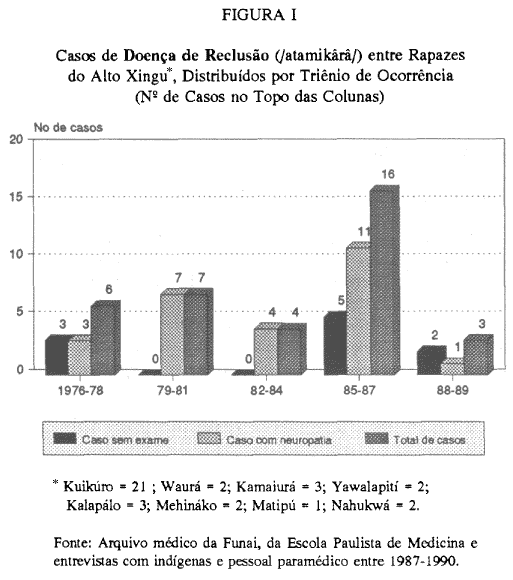This article presents an anthropological approach to the symbolic aspects of the disease, considering traditional representations about the puberty seclusion syndrome which affects adolescent indians from the Upper Xingu region (Central Brazil), in a comparative perspective with the clinical-epidemiological approach. The traditional nosological category and its etiological implications in indigenous medicine and culture are contrasted with the western medical category - a peripheral neuropathy, possibly of toxic origin - identified in some cases of the syndrome. An epidemiological analysis of the data collected from the traditional point of view shows relations with events of cultural origin, associated with social and political contexts and with the nature of cross-cultural relations. Moreover, this culture-bound syndrome presents some methological issues for western medicine, particularly for biomedical and social-epidemiological approaches. Finally, the authors make explicit some cultural assumptions characteristic of modern western society, underlying the procedures used by the scientific disciplines involved.




